(Z)-1,3-Dichloro-1-propene
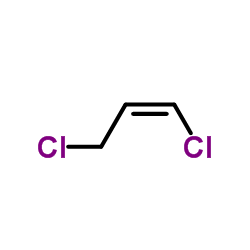
(Z)-1,3-Dichloro-1-propene structure
|
Common Name | (Z)-1,3-Dichloro-1-propene | ||
|---|---|---|---|---|
| CAS Number | 10061-01-5 | Molecular Weight | 110.970 | |
| Density | 1.2±0.1 g/cm3 | Boiling Point | 108.4±15.0 °C at 760 mmHg | |
| Molecular Formula | C3H4Cl2 | Melting Point | N/A | |
| MSDS | Chinese USA | Flash Point | 27.8±0.0 °C | |
| Symbol |




GHS02, GHS06, GHS08, GHS09 |
Signal Word | Danger | |
| Name | (Z)-1,3-dichloropropene |
|---|---|
| Synonym | More Synonyms |
| Density | 1.2±0.1 g/cm3 |
|---|---|
| Boiling Point | 108.4±15.0 °C at 760 mmHg |
| Molecular Formula | C3H4Cl2 |
| Molecular Weight | 110.970 |
| Flash Point | 27.8±0.0 °C |
| Exact Mass | 109.969009 |
| LogP | 2.01 |
| Vapour Pressure | 30.4±0.2 mmHg at 25°C |
| Index of Refraction | 1.457 |
| InChIKey | UOORRWUZONOOLO-UPHRSURJSA-N |
| SMILES | ClC=CCCl |
| Stability | Stable. Flammable. Incompatible with strong oxidizing agents, aluminium and its alloys, active metals, halogens, some metal salts. May be light sensitive. |
|
Section I.Chemical Product and Company Identification Chemical Namecis-1,3-Dichloropropene (1mg/ml in Methanol) [for Water Analysis] Portland OR Not available. Synonym Chemical FormulaC3H4Cl2
CAS Number10061-01-5 67-56-1 (Methanol) Section II.Composition and Information on Ingredients CAS Number Percent (%)TLV/PELToxicology Data Chemical Name cis-1,3-DichloropropeneCa. 0.13%This chemical is classified as a (Methanol) 10061-01-5 (1mg/ml in Methanol) [for Water Analysis]possible carcinogen. There is Rat LD50 (oral) 5600 mg/kg 67-56-1 (Methanol)Ca. 99.87% (Methanol) no acceptable exposure limit for Rabbit LD50 (dermal) 15800 mg/kg a carcinogen.Rat LD50 (inhalation) 64000 ppm/4H Section III. Hazards Identification Acute Health EffectsToxic if ingested or inhaled. Avoid prolonged contact with this material. Overexposure may result in serious illness or death. Irritating to eyes and skin on contact. Inhalation causes irritation of the lungs and respiratory system. Inflammation of the eye is characterized by redness, watering, and itching. Skin inflammation is characterized by itching, scaling, reddening, or, occasionally, blistering. Follow safe industrial hygiene practices and always wear proper protective equipment when handling this compound. Chronic Health EffectsCARCINOGENIC EFFECTS : Neoplastic by RTECS criteria MUTAGENIC EFFECTS : Not available. TERATOGENIC EFFECTS : Tumorigenic Effects: Mouse TDLo (Subcutaneous) 9240 mg/kg/77 weeks intermittent Toxic Effects: Tumorigenic- Neoplastic by RTECS criteria Tumorigenic- Tumors at site of application. DEVELOPMENTAL TOXICITY: Reproductive Effects: Rat TCLo (Inhalation) 20000 pm/7 hours. Female 1-22 days of pregnancy. Toxic Effects: Specific Developmental Abnormalities- Musculoskeletal system Specific Developmental Abnormalities- Cardiovascular (circulatory) system Specific Developmental Abnormalities- Urogenital system Rat TDLo (Oral) 35295 mg/kg. Female 1-15 days of pregnancy Toxic Effects: Effects on Fertility- Female fertility index Effects on Fertility- Pre-implantation mortality Effects on Fertility- Post-implantation mortality Mouse TDLo (Oral) 4gm/kg. Female 7 days of pregnancy Toxic Effects: Specific Developmental Abnormalities- Craniofacial (including nose and tongue) Specific Developmental Abnormalities- Musculoskeletal system Repeated exposure to an highly toxic material may produce general deterioration of health by an accumulation in one or many human organs. Section IV.First Aid Measures Check for and remove any contact lenses. In case of contact, immediately flush eyes with plenty of water for at least 15 Eye Contact minutes. Get medical attention. In case of contact, immediately flush skin with plenty of water for at least 15 minutes while removing contaminated clothing Skin Contact and shoes. Wash clothing before reuse. Thoroughly clean shoes before reuse. Get medical attention immediately. InhalationIf the victim is not breathing, perform mouth-to-mouth resuscitation. Loosen tight clothing such as a collar, tie, belt or waistband. If breathing is difficult, oxygen can be administered. Seek medical attention if respiration problems do not improve. Continued on Next Page cis-1,3-Dichloropropene (1mg/ml in Methanol) [for Water Analysis] INDUCE VOMITING by sticking finger in throat. Lower the head so that the vomit will not reenter the mouth and throat. Ingestion Loosen tight clothing such as a collar, tie, belt or waistband. If the victim is not breathing, perform mouth-to-mouth resuscitation. Examine the lips and mouth to ascertain whether the tissues are damaged, a possible indication that the toxic material was ingested; the absence of such signs, however, is not conclusive. Section V.Fire and Explosion Data 464°C (867.2°F) (Methanol) Flammable.Auto-Ignition Flammability Flash PointsFlammable LimitsLOWER: 5.5% UPPER: 44% (Methanol) 23.9°C (75°F). 12°C (53.6°F). (Methanol) Combustion ProductsThese products are toxic carbon oxides (CO, CO2), halogenated compounds WARNING: Highly toxic HCl gas is produced during combustion. Fire Hazards Not available. Risks of explosion of the product in presence of mechanical impact: Not available. Explosion Hazards Risks of explosion of the product in presence of static discharge: Not available. Fire Fighting Media Flammable liquid. SMALL FIRE: Use DRY chemical powder. and Instructions LARGE FIRE: Use alcohol foam, water spray or fog. Cool containing vessels with water jet in order to prevent pressure build-up, autoignition or explosion. Consult with local fire authorities before attempting large scale fire-fighting operations. Section VI.Accidental Release Measures Spill CleanupFlammable material. Toxic material. Environmentally hazardous material. Irritating material. Heat sensitive material. Hygroscopic material. Instructions Keep away from heat. Mechanical exhaust required. Stop leak if without risk. Absorb with DRY earth, sand or other non-combustible material. DO NOT get water inside container. DO NOT touch spilled material. Use water spray to reduce vapors. Prevent entry into sewers, basements or confined areas; dike if needed. Consult federal, state, and/or local authorities for assistance on disposal. Section VII. Handling and Storage Handling and StorageFLAMMABLE. TOXIC. ENVIRONMENTAL HAZARD. IRRITANT. HEAT SENSITIVE. HYGROSCOPIC. FREEZE. Keep locked up.. Keep away from heat. Mechanical exhaust required. Avoid excessive heat and light. DO NOT ingest. Do not Information breathe gas/fumes/ vapor/spray. Wear suitable protective clothing. If ingested, seek medical advice immediately and show the container or the label. Treat symptomatically and supportively. Always store away from incompatible compounds such as oxidizing agents. Section VIII. Exposure Controls/Personal Protection Engineering ControlsProvide exhaust ventilation or other engineering controls to keep the airborne concentrations of vapors below their respective threshold limit value. Ensure that eyewash station and safety shower is proximal to the work-station location. Personal ProtectionSplash goggles. Lab coat. Vapor respirator. Boots. Gloves. A MSHA/NIOSH approved respirator must be used to avoid inhalation of the product. Suggested protective clothing might not be sufficient; consult a specialist BEFORE handling this product. Exposure LimitsThis chemical is classified as a possible carcinogen. There is no acceptable exposure limit for a carcinogen. Section IX. Physical and Chemical Properties Liquid. (Clear. Colorless, amber.)Solubility Physical state @ 20°CSoluble in ether, benzene, chloroform, water. 1.224 (water=1)Miscible with hydrocarbons, halgenated Specific Gravity 0.79 (Methanol)solvents, esters, and ketones. Molecular Weight110.97Partition CoefficientThe product is more soluble in oil; 32.04 (Methanol)log(oil/water) = 2.1 Boiling Point104.3°C (219.7°F)Vapor Pressure3.5 kPa (@ 20°C) 64°C (147.2°F) (Methanol)97.68 mmHg (@ 20°C) (Methanol) Melting Point-98°C (-144.4°F) (Methanol)Vapor Density1.4 (Air = 1) 1.1 (Air = 1) (Methanol) Not available.Not available. Refractive IndexVolatility Critical TemperatureNot available.OdorChloroform like, sharp, sweet, penetrating, irritating odor. Not available.Not available. ViscosityTaste Continued on Next Page cis-1,3-Dichloropropene (1mg/ml in Methanol) [for Water Analysis] Section X.Stability and Reactivity Data This material is stable if stored under proper conditions. (See Section VII for instructions) Stability Conditions of InstabilityAvoid excessive heat and light. Incompatibilities Reactive with oxidizing agents, reducing agents, acids, acid chlorieds, acid anhydrides, and alkali metals. Section XI. Toxicological Information UC8325000 RTECS Number Routes of ExposureEye Contact. Ingestion. Inhalation. (Methanol) Toxicity Data Rat LD50 (oral) 5600 mg/kg Rabbit LD50 (dermal) 15800 mg/kg Rat LD50 (inhalation) 64000 ppm/4H Chronic Toxic EffectsCARCINOGENIC EFFECTS : Neoplastic by RTECS criteria MUTAGENIC EFFECTS : Not available. TERATOGENIC EFFECTS : Tumorigenic Effects: Mouse TDLo (Subcutaneous) 9240 mg/kg/77 weeks intermittent Toxic Effects: Tumorigenic- Neoplastic by RTECS criteria Tumorigenic- Tumors at site of application. DEVELOPMENTAL TOXICITY: Reproductive Effects: Rat TCLo (Inhalation) 20000 pm/7 hours. Female 1-22 days of pregnancy. Toxic Effects: Specific Developmental Abnormalities- Musculoskeletal system Specific Developmental Abnormalities- Cardiovascular (circulatory) system Specific Developmental Abnormalities- Urogenital system Rat TDLo (Oral) 35295 mg/kg. Female 1-15 days of pregnancy Toxic Effects: Effects on Fertility- Female fertility index Effects on Fertility- Pre-implantation mortality Effects on Fertility- Post-implantation mortality Mouse TDLo (Oral) 4gm/kg. Female 7 days of pregnancy Toxic Effects: Specific Developmental Abnormalities- Craniofacial (including nose and tongue) Specific Developmental Abnormalities- Musculoskeletal system Repeated exposure to an highly toxic material may produce general deterioration of health by an accumulation in one or many human organs. Toxic if ingested or inhaled. Avoid prolonged contact with this material. Overexposure may result in serious illness or death. Acute Toxic Effects Irritating to eyes and skin on contact. Inhalation causes irritation of the lungs and respiratory system. Inflammation of the eye is characterized by redness, watering, and itching. Skin inflammation is characterized by itching, scaling, reddening, or, occasionally, blistering. Follow safe industrial hygiene practices and always wear proper protective equipment when handling this compound. Section XII.Ecological Information Not available. Ecotoxicity Environmental Fatecis-1,3-Dichloropropene's production and use as a soil fumigant and nematicide is expected to result in its direct release to the environment. If released to air, a vapor pressure of 26 mm Hg at 20 deg C indicates cis-1,3-dichloropropene will exist solely as a vapor in the ambient atmosphere. Vapor-phase cis-1,3-dichloropropene will be degraded in the atmosphere by reaction with photochemically-produced hydroxyl radicals; the half-life for this reaction in air is estimated to be 46 hrs. If released to soil, cis-1,3-dichloropropene is expected to have very high mobility based upon a range of Kocs from 20 to 42. Volatilization from moist soil surfaces is expected to be an important fate process based upon a Henry's Law constant of 2.7X10-3 atm-cu m/mole. cis-1,3-Dichloropropene may volatilize from dry soil surfaces based upon its vapor pressure. cis-1,3-Dichloropropene is expected to biodegrade in soil and water under aerobic and anaerobic conditions. Under aerobic conditions, the half-life for 1,3-dichloropropene was 12 days in a loam soil. Under anaerobic conditions at 25 deg C, in both a silty clay loam and sandy loam soil, the half-life was 2.4 days. If released into water, cis-1,3-dichloropropene is not expected to adsorb to suspended solids and sediment based upon the Kocs. Volatilization from water surfaces is expected to be an important fate process based upon this compound's Henry's Law constant. Estimated volatilization half-lives for a model river and model lake are 1.3 and 102 hrs, respectively. An estimated BCF of 8 suggests the potential for bioconcentration in aquatic organisms is low. cis-1,3-Dichloropropene degrades by chemical hydrolysis; at pH values of 5, 7, 9, the half-life of 1,3-dichloropropene was 13.5 days at 20 deg C. Occupational exposure to cis-1,3-dichloropropene may occur through inhalation and dermal contact with this compound at workplaces where cis-1,3-dichloropropene is produced or used. Occupational exposure may also occur for agricultural workers using this compound as a soil fumigant and nematicide. The general population may be exposed to cis-1,3-dichloropropene via inhalation of ambient air and drinking water in areas where cis-1,3-dichloropropene is used a soil fumigant and nematicide. (Methanol) Methanol's production and use as a solvent, fuel additive, and in the production of formaldehyde, acetic acid, and methyl tertiary butyl ether (MTBE) may result in its release to the environment through various waste streams. Methanol has been identified as a natural emission product from various plants and as a biological decomposition product of biological wastes and sewage. If released to the atmosphere, a vapor pressure of 127 mm Hg at 25 deg C indicates that methanol will exist solely in the vapor phase. Vapor phase methanol is degraded in the atmosphere by reaction with photochemically-produced hydroxyl radicals; the half-life for this reaction in air is estimated to be 17 days. If released to soil, methanol is expected to have very high mobility based upon an estimated Koc of 1. Volatilization from moist soil surfaces is expected to be an important fate process based upon a Henry's Law constant of 4.55X10-6 atm-cu m/mole. Methanol may also volatilize from dry soils based upon it vapor pressure. Biodegradation of methanol in soils is expected to occur rapidly based on half-lives in a sandy silt loam from Texas and a sandy loam from Mississippi of 1 and 3.2 days, respectively. If released into water, methanol is not expected to adsorb to suspended solids and sediment based upon the estimated Koc. Volatilization from water surfaces is expected to be an important fate process based upon this compound's Henry's Law constant. Estimated volatilization half-lives for a model river and model lake are 3 and 35 days, respectively. Biodegradation is expected to occur Continued on Next Page cis-1,3-Dichloropropene (1mg/ml in Methanol) [for Water Analysis] in natural waters since methanol is degraded quickly in soils and was biodegraded rapidly in various aqueous screening tests using sewage seed or activated sludge. BCF values of less than 10, measured in fish suggests bioconcentration in aquatic organisms is low. Hydrolysis of methanol and photolysis in sunlit surface waters are not expected since methanol lacks functional groups that are susceptible to hydrolysis or photolysis under environmental conditions. Occupational exposure to methanol may occur through inhalation and dermal contact with this compound at workplaces where methanol is produced or used. Monitoring data indicate that the general population may be exposed to methanol via inhalation of ambient air, and ingestion of food and drinking water. Section XIII. Disposal Considerations Recycle to process, if possible. Consult your local regional authorities. You may be able to dissolve or mix material with a Waste Disposal combustible solvent and burn in a chemical incinerator equipped with an afterburner and scrubber system. Observe all federal, state and local regulations when disposing of the substance. Section XIV. Transport Information DOT ClassificationDOT CLASS 3: Flammable liquid. DOT CLASS 6.1: Toxic material. PIN Number Proper Shipping NameFlammable liquid, toxic, n.o.s. II Packing Group (PG) DOT Pictograms Section XV. Other Regulatory Information and Pictograms TSCA Chemical InventoryThis product is NOT on the EPA Toxic Substances Control Act (TSCA) inventory. The following notices are required by 40 CFR 720.36 (C) for those products not on the inventory list: (EPA) (i) These products are supplied solely for use in research and development by or under the supervision of a technically qualified individual as defined in 40 CFR 720.0 et sec. (ii) The health risks of these products have not been fully determined. Any information that is or becomes available will be supplied on an MSDS sheet. WHMIS ClassificationCLASS B-2: Flammable liquid with a flash point lower than 37.8°C (100°F). CLASS D-1B: Material causing immediate and serious toxic effects (TOXIC). (Canada) EINECS Number (EEC)233-195-8 200-659-6 (Methanol) EEC Risk StatementsR10- Flammable. R18- In use, may form flammable/explosive vapor-air mixture. R23/24/25- Toxic by inhalation, in contact with skin and if swallowed. R51- Toxic to aquatic organisms. R53- May cause long-term adverse effects in the aquatic environment. R36/37/38- Irritating to eyes, respiratory system and skin. R45- May cause cancer. Japanese Regulatory DataENCS no.: 2-125 SECTION 16 - ADDITIONAL INFORMATION N/A |
CHEMICAL IDENTIFICATION
HEALTH HAZARD DATAACUTE TOXICITY DATA
MUTATION DATA
|
| Symbol |




GHS02, GHS06, GHS08, GHS09 |
|---|---|
| Signal Word | Danger |
| Hazard Statements | H226-H301-H304-H311-H315-H317-H319-H332-H335-H410 |
| Precautionary Statements | P261-P273-P280-P301 + P310-P305 + P351 + P338-P312 |
| Personal Protective Equipment | Eyeshields;Faceshields;full-face respirator (US);Gloves;multi-purpose combination respirator cartridge (US);type ABEK (EN14387) respirator filter |
| Hazard Codes | T:Toxic;N:Dangerousfortheenvironment; |
| Risk Phrases | R10;R20/21;R25;R36/37/38;R43;R50/53 |
| Safety Phrases | S36/37-S45-S60-S61 |
| RIDADR | UN 2047 |
| WGK Germany | 3 |
| RTECS | UC8325000 |
| Packaging Group | III |
| Hazard Class | 3.2 |
|
~% 
(Z)-1,3-Dichlor... CAS#:10061-01-5 |
| Literature: Journal of the American Chemical Society, , vol. 75, p. 1392 |
|
~%
Detail
|
| Literature: WO2009/773 A1, ; Page/Page column 19-21 ; |
|
~% 
(Z)-1,3-Dichlor... CAS#:10061-01-5 |
| Literature: Oest.Chemiker-Ztg., , vol. 48, p. 186 |
|
~% 
(Z)-1,3-Dichlor... CAS#:10061-01-5
Detail
|
| Literature: US2430326 , ; Industrial and Engineering Chemistry, , vol. 31, p. 1536 |
| Precursor 5 | |
|---|---|
| DownStream 9 | |
|
Laboratory assessment of emission reduction strategies for the agricultural fumigants 1,3-dichloropropene and chloropicrin.
Environ. Sci. Technol. 43(13) , 5073-8, (2009) With the increased use of the agricultural fumigants 1,3-dichloropropene (1,3-D) and chloropicrin (CP), it is important that strategies to reduce emissions of these fumigant from soil to the air are a... |
|
|
Mitigating 1,3-dichloropropene, chloropicrin, and methyl iodide emissions from fumigated soil with reactive film.
Environ. Sci. Technol. 46(11) , 6143-9, (2012) Implicated as a stratospheric ozone-depleting compound, methyl bromide (MeBr) is being phased out despite being considered to be the most effective soil fumigant. Its alternatives, i.e., 1,3-dichlorop... |
|
|
Managing root-knot nematodes and weeds with 1,3-dichloropropene as an alternative to methyl bromide in cucumber crops in China.
J. Agric. Food Chem. 59(6) , 2362-7, (2011) 1,3-dichloropropene (1,3-D) was evaluated as a potential alternative for the widely used soil fumigant methyl bromide (MeBr) in cucumber (Cucumis sativus Linn.) crops in China. Six treatments were rep... |
| 1-Propene, 1,3-dichloro- |
| 1,3-dichloro-propene |
| 1-Propene, 1,3-dichloro-, (1Z)- |
| (1Z)-1,3-dichloroprop-1-ene |
| CIS-1,3-DICHLOROPROPENE |
| 1,3-Dichloro-1-propene (Z) |
| Z-1,3-dichloropropene |
| cis-1,3-Dichloro-1-propene |
| EINECS 233-195-8 |
| 1-Propene, 1,3-dichloro-, (Z)- |
| propene, 1,3-dichloro- |
| 3-Chloropropenyl Chloride |
| Propene, 1,3-dichloro-, (Z)- |
| (1Z)-1,3-Dichloro-1-propene |
| cis-1,3-Dichloropropylene |
| MFCD00062949 |
| 1,3-dichloro-1-propene |
| trans-1,3-dichloropropene |
| propene, (Z)-1,3-dichloro- |
| (Z)-1,3-Dichloropropene |
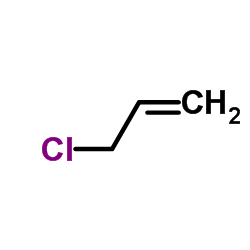
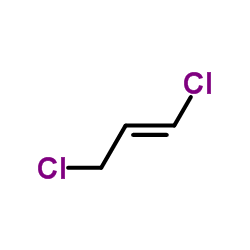







 CAS#:2953-50-6
CAS#:2953-50-6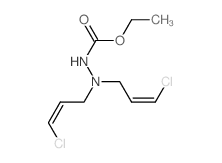 CAS#:24410-89-7
CAS#:24410-89-7 CAS#:18495-30-2
CAS#:18495-30-2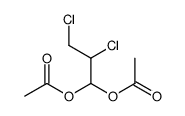 CAS#:10140-75-7
CAS#:10140-75-7 CAS#:16136-85-9
CAS#:16136-85-9 CAS#:16136-84-8
CAS#:16136-84-8 CAS#:4643-05-4
CAS#:4643-05-4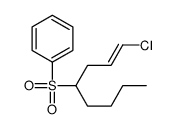 CAS#:62692-31-3
CAS#:62692-31-3
